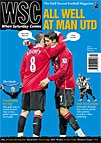 One of the game’s American pioneers has died. David Wangerin wonders if the game Lamar Hunt leaves behind is that healthy
One of the game’s American pioneers has died. David Wangerin wonders if the game Lamar Hunt leaves behind is that healthy
Soccer America referred to him as “the man who may have done more to advance soccer’s cause in the USA than any other individual”. It may be improbable, but could be true. Though Lamar Hunt, who died in December, is better known for starting the AFL professional gridiron league that ended up merging with the mighty NFL, his impact on America’s international brand of football was no less significant. Eulogists may have focused on his underwriting of the US’s first soccer-specific stadium and ownership of NASL and MLS franchises, but his most telling contribution to the game was probably his sheer loyalty.
When US professional soccer all but collapsed in 1969 and the millionaires who insisted they were “in it for the long run” scarpered like a kicked dog, Hunt stayed put. In keeping the Dallas Tornado spinning for the next 13 years, he offered a degree of legitimacy to the NASL it desperately required. Without this, the league almost certainly wouldn’t have survived long enough to enjoy its brief time in the sun. Such was the level of Hunt’s support that a grateful US Soccer Federation eventually appended his name to their Open Cup competition, America’s equivalent to the FA Cup.
Do MLS’s surviving millionaires share Hunt’s unshakable belief in the game? Certainly their view has been similarly long-term. The size of the league has never been greater and is set to grow. There has been only one franchise relocation (the San Jose Earthquakes transferred just last season and claimed the MLS Cup as the Houston Dynamo). Many of the heavier hitters have erected soccer-specific stadiums of their own. Eleven years on, though, the league is still losing money and last season’s decision to “rebrand” the MetroStars as the New York Red Bulls – surely one of the most lamentable decisions in the history of American pro sport – shows the depths MLS is still prepared to plumb for a few extra dollars.
Just what is serving to inspire the league’s financial pillars remains a mystery. Attendances have been flat almost from the first season and the television audience minuscule (though a modest rights deal is on the cards). Moreover, being an American soccer fan and liking MLS do not necessarily go hand-in-hand; the nation’s considerable fraternity of soccer snobs much prefer the televised glamour of the Premiership and Champions League to anything requiring a ticket. Most look down their noses at MLS’s minor-league budgets and often vapid gimmickry. The league are now attempting to address the former by easing the salary cap, effectively allowing clubs to spend as much as they want on two players. The change has been informally christened the “Beckham Rule”, though the arrival of you-know-who is by no means imminent and opinions differ as to whether he would be good for the American game in the first place.
Though MLS have tread a fairly sensible path, some moves remain questionable. The regular season continues to count for almost nothing: eight of the 12 teams qualify for the play-offs, so there’s little need for anyone to take any interest in the season until it’s nearly over, and then only for a handful of matches. Moreover, the championship continues to be determined by a single showcase game that tends to be nothing of the sort (this year’s, won by the Dynamo on penalties, was typically dull). While a US sports league without a Super Bowl-ish equivalent may seem absurd, MLS would do well to think more in soccer terms than American ones. (From a commercial perspective they seem to have done so: shirt sponsorship, alas, is finally on its way.)
The cup bearing Hunt’s name also represents a missed opportunity. The largest crowd to witness a US Open Cup final was in 1929 and, while MLS have largely been faithful in entering their teams (the NASL never bothered), the competition still flies well below the national sporting radar. If soccer needs a Super Bowl, the (Lamar Hunt) Open Cup final is surely it. One idea for ramping up its appeal might be to rope in the better college teams. While the thought of embracing – or at least acknowledging – the sport’s wider community remains anathema to the National Collegiate Athletic Association, which continues to treat “outside ball” as if it were some sort of disease, interest in the NCAA’s own game remains stuck in a time warp. This season’s major-college championship attracted just 5,948 to ice-bound St Louis.
Americans are warming to the World Cup – it’s said that more of then went to Germany 2006 than all the other tournaments, bar 1994, put together – but the pro game’s imprint is far less indelible. The outlook for MLS is not necessarily bleak, but the league shouldn’t forget that even faithful old Lamar Hunt eventually folded his NASL tent.
From WSC 24o February 2007. What was happening this month